I'd like to draw a Bitmap on a Canvas, with a (linear) alpha gradient applied. The important point is that I don't want to overlay the image with any other color; the background (coming from the Views behind the View that I'd be drawing this Canvas to) should just "shine through". To illustrate, my goal would be something like this (the checkerboard pattern represents the View behind)
One would think that I could do something like this:
Bitmap bitmap = ...;
Paint paint = new Paint();
paint.setShader(new LinearGradient(0, 0, 100, 0, FROM, TO, Shader.TileMode.CLAMP));
canvas.drawBitmap(bitmap, 0, 0, paint);
but LinearGradient's FROM and TO arguments here would need to be colors, not alpha values; so there's no way that I see to specify that e.g. FROM should be fully transparent and TO should be fully opaque (without applying any color overlay).
